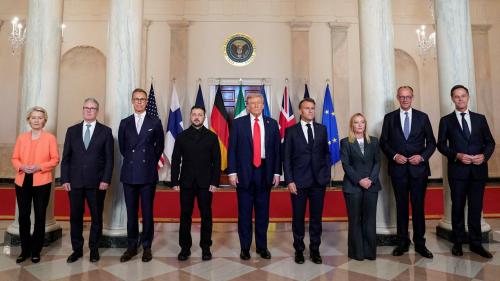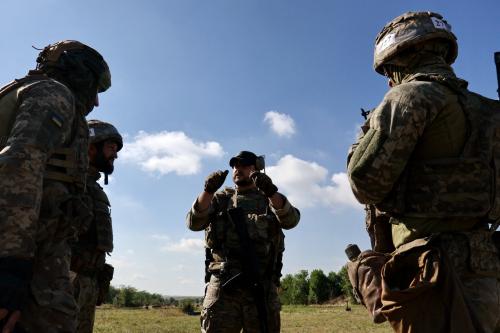As noted in our recent Brookings Institution report, unmanned aerial vehicles (UAVs), commonly referred to as drones, are an emerging technology that requires the attention of local governments. Unfortunately, regulations governing their usage are significantly lagging the pace of innovation. Individual citizens who do not want these devices flying over (or even near) their property due to privacy or safety concerns have limited options. You can stay in your home and turn the music up until it goes away. Or you can go about your business and ignore the possibility that the drone has a camera to see inside your home. Others might prefer a more active response. In fact, there have been several recent instances where residents have taken it upon themselves to remove these drones from the skies…by force.
Misuses of drones
The usage of UAVs and the lack of a functional regulatory environment have not been without incident. Fire personnel in southern San Bernardino County were fighting the first major fire of the season and had to abort their tanker flights due to someone flying a drone at approximately 12,000 feet and interfering with the safety of the pilots. Just two weeks later, firefighters in Southern California were using several manned aircraft to help put out 20 car fires on an interstate highway that were caused when a wildfire jumped the highway unexpectedly. Pilots had to ground the planes when it was reported that five drones were flying around the area to get a good look at the fires (two of which were witnessed actually chasing the tanker planes!).
In addition to the general lack of common sense by a few users interfering with life-saving aircraft around the U.S., Britain, Poland, and elsewhere, there have been an increasing number of incidents involving drones accused of serving as remote “peeping toms.” UAVs have also crashed into cars and homes; they have even been used to smuggle drugs across the U.S.-Mexico border in addition to smuggling marijuana into prisons in South Carolina and in Ohio.
Uneven regulations
When it comes to regulations around drones, we are living in the proverbial wild-west. A few states, like Nevada and Wisconsin, have passed legislation to prevent the weaponization of drones. But in July, a YouTube video went viral of a teenager in Connecticut who modified his drone to fire a semi-automatic handgun successfully. When confronted by law enforcement officials, they determined that no laws had actually been broken. Virginia was the first state legislature to put in place a two-year moratorium on drone usage by state or law enforcement agencies. That moratorium expired July 1st. By the end of 2014, 36 states had introduced legislation aimed at protecting individual privacy in some manner. Only four of those passed last year. Currently, there are 17 states with some form of drone regulation on their books, and several other states still have legislation pending. Most of the laws that have passed, such as those in Idaho and Florida, focus on limiting police usage of drones by requiring probable cause warrants.
Nevada has been one of the more active states in the drone legislation arena. In addition to their legislation prohibiting the weaponization of civilian drones, the state also has passed legislation to provide homeowners rights to sue drone owners who fly their drones over personal property in certain circumstances. Furthermore, Nevada now requires law enforcement agencies to get warrants when using drones near any home “where there is an expectation of privacy.”
Potential benefits and rulemaking challenges
We do acknowledge and are excited about the positive benefits that drone technology is poised to provide. Amazon has been testing their commercial “Prime Air” package delivery system under an experimental testing agreement with the FAA since early 2015, which will likely impact the nature of their almost two year old partnership with the U.S. Postal Service. Drone startup company Flirtey successfully demonstrated their ability to deliver medicine to a rural medical facility in Virginia as part of their proof of concept efforts this July. Drones may even represent the future of pizza delivery.
The challenge this rapidly developing technology is creating is well ahead of local government efforts to rein in excessive activities. State and local governments need to engage on this policy issue more proactively. To do so, however, requires a delicate balancing act of the multiple competing interests of legitimate commercial uses, policing, public safety, privacy, and private property concerns. And this balancing has to take place in an environment where federal law remains unsettled too.
One thing we would definitely caution against is ‘regulation by default.’ To date, the efforts to regulate drone policy has focused on the drones themselves. As is commonly the case with new technology, governments typically engaged with a heavy hand that sometimes misses the opportunities afforded by the new technologies to improve city services and quality of life. Examples of this possible overreaction is Iowa City, Iowa and Charlottesville, Virginia, both of which were early adopters of complete bans on all surveillance drones within city limits back in 2013.
Local governments need to accept that drone technology is here for the near future. They must recognize that technology is not the problem, but how it is used can be a potential problem. Given the potential drawbacks and benefits, there is justification for reasoned regulation of drone technology.
The Brookings Institution is committed to quality, independence, and impact.
We are supported by a diverse array of funders. In line with our values and policies, each Brookings publication represents the sole views of its author(s).




Commentary
Drones and the “Wild West” of regulatory experimentation
August 17, 2015